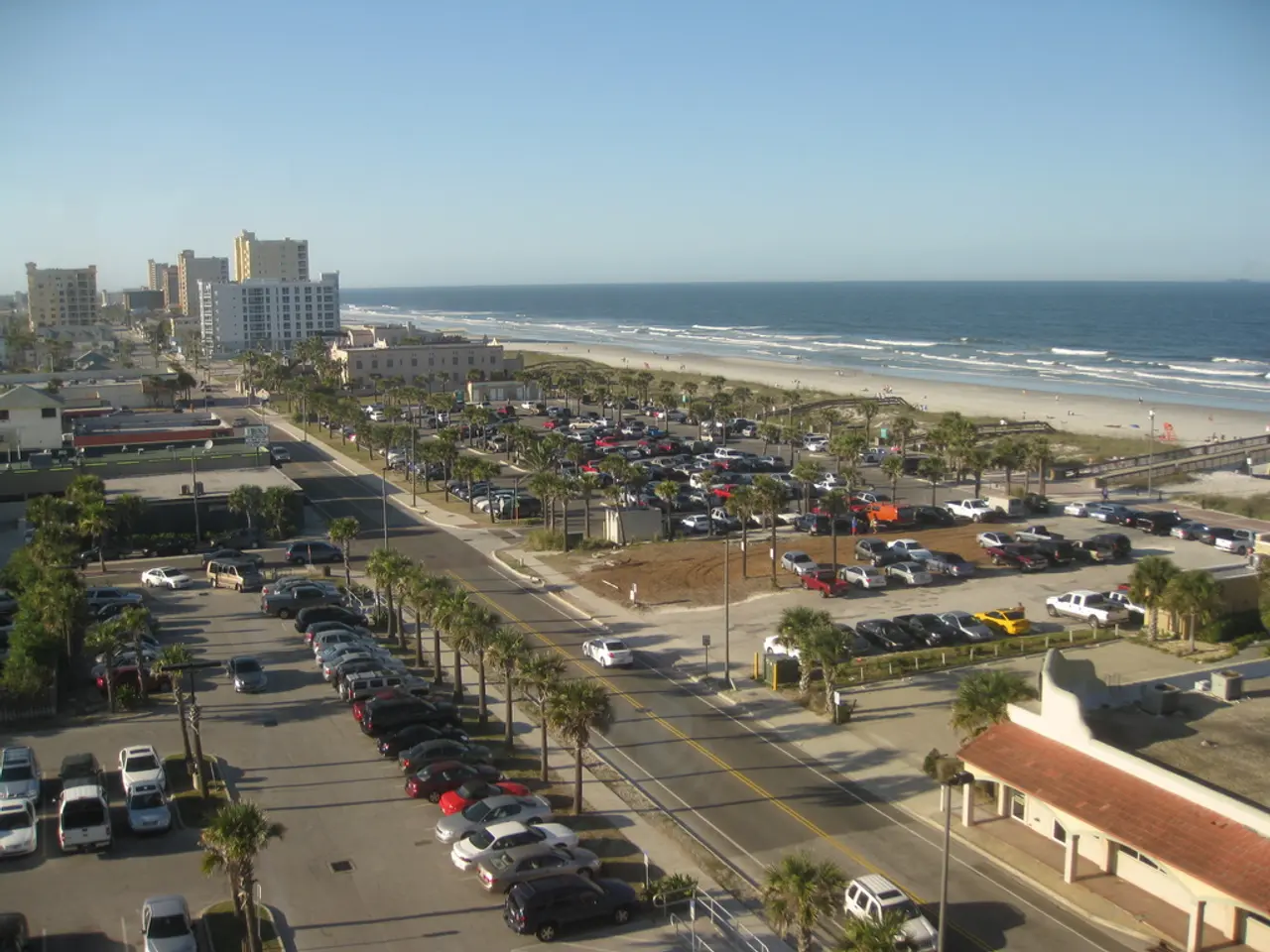Monitoring the presence of plastic in marine environments
The Sustainable Seas National Science Challenge, a pioneering initiative funded by MBIE, has developed an innovative tool called the Ocean Plastic Simulator. This computer model is designed to help understand the movement of plastic debris in New Zealand's marine communities.
The Ocean Plastic Simulator operates by simulating the transport, accumulation, and fate of plastic debris within ocean currents and local marine environments. By doing so, researchers can gain insights into how plastics travel through coastal waters, interact with ecosystems, and where they are likely to accumulate or disperse.
The simulator integrates physical oceanographic data, such as currents, tides, and wind patterns, with information on plastic types and sources. This integration allows for the prediction of pathways and environmental impacts. Although the exact modeling methods and algorithms used by the Simulator are not publicly disclosed, models of this nature typically employ probabilistic or particle-tracking methods to represent plastic debris movement.
The Ocean Plastic Simulator is instrumental in managing and mitigating marine plastic pollution. It identifies key areas where plastics concentrate or enter sensitive habitats, aligning with the Sustainable Seas National Science Challenge's goal of sustainably managing New Zealand's marine environment.
Scientists use models like the Ocean Plastic Simulator as a way of representing phenomena ethically, as it would not be acceptable to drop plastic bottles in the sea to observe their movement due to potential loss and addition to pollution.
The Simulator has been used in educational settings, with Heni Unwin, a Kairangahau (researcher) at Cawthron Institute, trialling it with schools around Aotearoa to improve its function and design. In March 2019, Heni and Ross Vennell shared the tool as part of a LEARNZ virtual field trip.
The simulator shows how the sea and the coasts are connected by ocean movements such as tides, winds, and currents. Millions of tonnes of plastics enter the oceans every year, and instead of biodegrading, they break into smaller pieces. This microplastic pollution poses a significant threat to marine life and ecosystems.
The Ocean Plastic Simulator models the movement of virtual plastic dropped near Ward (black dot) in Cook Strait for 30 days, showing where some of the plastic (red x) ends up on the coast of the North Island, while other pieces (green dot) are swept out to the open ocean.
Efforts to combat ocean pollution are not limited to the Ocean Plastic Simulator. Initiatives like the Mizuiku Upstream Battle, run by Keep New Zealand Beautiful, collect and audit litter at key upstream sites to help provide a better understanding of the root causes of ocean pollution. Meanwhile, Litter Intelligence, a programme run by Sustainable Coastlines, aims to create a grassroots solution to beach litter in New Zealand.
Moreover, Litterati is an international project that allows participants to photograph, upload, and tag litter in their own area. These initiatives, combined with the Ocean Plastic Simulator, provide valuable insights into the extent and impact of marine plastic pollution and contribute to the development of effective strategies to address this pressing issue.
The Sustainable Seas National Science Challenge has also developed resources for teachers, such as the Tohorā website, which offers resources with a focus on geography and social sciences. Additionally, the Challenge has created a set of cards introducing key elements of kaitiakitanga, which are available to download or request hard copies. The 11 Hui-te-ana-nui: Kaitiakitanga cards offer an introduction to key elements of kaitiakitanga and are available to download or request hard copies.
In conclusion, the Ocean Plastic Simulator is a powerful tool in the fight against marine plastic pollution. By simulating the movement of virtual plastic in New Zealand's coastal waters, it provides valuable insights into how plastics travel, interact with ecosystems, and where they are likely to accumulate or disperse. Through education and collaboration, initiatives like the Ocean Plastic Simulator and the Sustainable Seas National Science Challenge are working towards a cleaner, healthier ocean for all.
- The Ocean Plastic Simulator's integration of environmental science data with home-and-garden-related information such as plastic types and sources contributes to a better understanding of sustainable living practices that can minimize plastic pollution.
- By using the Ocean Plastic Simulator in educational settings, students can learn about climate-change impacts on marine environments and how they can adopt sustainable lifestyles to mitigate plastic waste.
- Aside from the Ocean Plastic Simulator, programs like Litterati and Mizuiku Upstream Battle encourage environmental science, addressing key aspects of sustainable living and promoting kaitiakitanga (guardianship).




